Stopping a Deportation
Relief from deportation before an immigration court
STOPPING A DEPORTATION
Relief from deportation before an immigration court
DEPORTATION IS NOT AUTOMATIC
Immigrants often assume that being placed in deportation or removal proceedings automatically means deportation, and thus there’s no reason to consult an immigration attorney.
Nothing could be further from the truth. The immigration law sets forth many ways in which a person subject to deportation can apply to stop their deportation and remain in the U.S. on a permanent basis.
To find out if you qualify, it’s critical to consult with an immigration attorney. An experience attorney will delve deep into the facts and leave no stone unturned. At consultations in our law firm, we ask about everything that could give a person in deportation proceedings even a glimmer of hope. We want to know about every entry and departure from the U.S., every family member’s immigration status (past and present), every divorce, every marriage (formal or informal), every family illness or hardship, every past incident of victimization or abuse, every arrest and disposition, etc.
Below are the most common forms of relief we evaluate in analyzing how to stop a deportation.

WHAT TYPES OF RELIEF ARE THERE?
Grant of Cancellation
To qualify, you must have 10 years of continuous physical presence in the United States, up until the court filing of the Notice To Appear. During this period you must demonstrate good moral character. You also cannot have been convicted of a crime under Section 212(a)(2) or 237(a)(2) of the Act.
The final requirement for a grant of cancellation is normally the toughest: you must demonstrate that your removal from the United States will cause exceptional and extremely unusual hardship on a U.S. citizen or resident parent, spouse or child. This is a very high burden, and few applicants can meet it. Imagine the ordinary case when someone is deported. It causes significant hardship on his family. To win cancellation, you have to prove hardship that far exceeds that in the ordinary, or even extreme, case.
Often the best reason to apply for cancellation is that it buys time. Removal proceedings can take several months to years to be fully resolved, not even including time during an appeal. During that time, a cancellation applicant can receive a work permit. Also, while the application is pending, we often look for other types of relief that become available.
Cancellation of removal for lawful permanent residents
Green card holders can apply to cancel their removal if they have had their green cards for 5 years, if they have continuously resided in the U.S. for 7, and if they lack a conviction for an aggravated felony.
Deciding whether you have 7 years of continuous residence is trickier than it sounds. Several types of criminal offenses can “stop the clock.”
Knowing if you’ve been convicted of an aggravated felony is also not a simple matter.
Even if you meet the above eligibility requirements, you’ll need to prove to an immigration judge that you deserve to remain in the U.S. as a matter of discretion. This means that in deciding your application, the Immigration Judge will weigh factors like your length of presence, family hardship, and the nature and seriousness of criminal history.
Adjustment of status (or Re-Adjustment of status)
Just as a person can apply for a green card through a family member outside of removal proceedings, he or she can do the same in immigration court. Except, in removal proceedings, only the immigration judge can decide whether to give you a green card.
The same eligibility requirements apply, whether or not you in removal proceedings. You’ll need an approved visa petition, a visa that’s immediately available, and a lawful entry to the United States (or meet some other exception).
Also, if you have criminal history that makes you inadmissible, you’ll need to seek a criminal waiver under section 212(h) of the Immigration and Nationality Act.
Notably, even people that have already adjusted status in the past can sometimes qualify for “Readjustment of Status.” To do so, you’ll need a new visa petition, one that’s different from the one that you previously used.
Asylum, Withholding of Removal, and Protection under the Convention Against Torture
Asylum is a form of government protection for refugees. Refugees are persons who fled persecution from their native countries. Significantly, you can’t get asylum just because your life is in danger. You have to prove that the persecution feared is on account of your race, religion, nationality, political opinion, and membership in a particular social group. Also, generally speaking, you won’t qualify for asylum unless you apply within one year of your last entry. (Exceptions apply though.) Finally, you are barred from seeking asylum if you’ve been convicted of an aggravated felony.
If you don’t qualify for asylum, but still fear for your life, there are other forms of related relief available. One is withholding of removal. Withholding of removal is harder to win than asylum; you have to prove that you face a greater than 50% chance of persecution. (For asylum, you only need to show a well-founded fear of persecution, which one court has suggested could be as low as 10%.) If you are granted withholding, you cannot leave the United States, and you can’t get a green card.
If you don’t qualify for withholding of removal, you can apply for protection under the Convention Against Torture. This for people who face a probability of being tortured by or at the acquiescence of a public official.
Temporary Protected Status
Occasionally, removal clients can qualify for Temporary Protected Status, which is a form of humanitarian relief for people only from designated countries — usually, ones that suffered some sort of disaster, man-made or natural.
Qualifying for TPS in removal proceedings is difficult because one must meet strict physical presence requirement.
U Visas
U visas are for victims of crimes that have cooperated in its investigation or prosecution and have suffered from it substantial physical or mental abuse. The crime must be on a list of qualifying offenses, which, among others, includes domestic violence, extortion, felonious assault, kidnapping, manslaughter, rape, and prostitution.
Technically, a U visa is not a form of relief that an immigration court can grant. Only USCIS has the power to grant a U visa application. However, if a U visa application is granted for a person in removal proceedings, ICE will move to terminate proceedings and stop the removal process.
The challenge in seeking relief through a U visa is two-fold. First, you have to convince a law enforcement official to sign a U visa law enforcement certification, to show that you were the victim of a crime and were cooperative. Second, you have to convince the immigration judge to hold off on going forward with removal proceedings while your U visa application is pending.
T Visas
T visas are for trafficking victims. As with the U visa, T visas cannot be decided by an immigration judge. T visa applications are only filed with USCIS. Nonetheless, if you’ve been the victim of human trafficking, seeking a T visa is an effective way of stopping deportation.
To qualify, you must have been the victim of sex or labor trafficking. Typically this requires that you were coerced in some way to perform sexual activity or to work.
If a decision is made that your application for a T visa is bona fide, then automatically you will receive a stay of removal from the Department of Homeland Security.
Notably, to get a T visa certification, you don’t need certification by a law enforcement official. At a minimum, you need to prove that you were the victim of human trafficking and that you tried to report the crime to authorities.
212(h) Waiver
The 212(h) waiver is a criminal waiver that can be used affirmatively (outside removal proceedings) and defensively (in removal proceedings).
In removal proceedings, it can only be used in two scenarios to waive a crime of inadmissibility. First, where the person was charged with removal on attempted entry into the country at a port-of-entry, like a border crossing point or airport. In this scenario, it’s used as a standalone waiver. Second, the waiver can be used in conjunction with an application adjustment of status in removal proceedings.
The waiver doesn’t every crime under the sun. Most commonly it’s used to waive crimes involving moral turpitude (like fraud or theft), prostitution, or a single offense of possession of marijuana under 30 grams. It cannot be used to waive other drug offenses like possession of cocaine or heroin, or multiple offenses involving marijuana.
Prosecutorial Discretion
Prosecutorial discretion refers to ICE’s discretion or authority to not pursue removal in a particular case, based on special circumstances. The use of prosecutorial discretion has largely ground to a halt under the Trump administration. It used to be a common tool for administratively closing cases where no relief was available, but where the person has a largely positive history and only minor blemishes.
We will find out in the coming months whether prosecutorial discretion will again become an avenue for seeking relief from deportation, especially in cases where a person qualifies for a provisional waiver of unlawful presence.
DO PEOPLE WIN DEPORATION CASES
Yes, we have succeeded in stopping countless deportations for detained and non-detained immigrants. Many cases were terminated early, after we argued successfully that the individual was not subject to deportation under the law. Others cases moved to the relief stage, where we proved the person’s eligibility and presented a well-evidenced story for why the person’s removal was not in the country’s best interest.
Nonetheless, it’s important to recognize that the facts of every are different, and no guarantee can be made as to the outcome. We cannot control for the state of the law, or the thought process of an immigration judge.
But first we promise to always give honest advice and set realistic expectations, even when that means turning away your case. And second, we promise to provide aggressive, sophisticated representation before the immigration court and will do everything possible to win your case.
WAYS TO STOP A DEPORTATION
We have taken on and won many challenging cases, involving the following relief types, among others:
CANCELLATION OF REMOVAL FOR LAWFUL PERMANENT RESIDENTS
CANCELLATION OF REMOVAL FOR NON-PERMANENT RESIDENTS (42A)
212(C) RELIEF
DERIVATIVE CITIZENSHIP CLAIMS
REQUESTS FOR PROSECUTORIAL DISCRETION
FREQUENTLY ASKED QUESTIONS ABOUT STOPPING A DEPORTATION
How long will it take to fight my deportation?
Deportation cases can last anywhere from a few weeks to several years. Generally, if a person is detained by ICE and unable to bond out, then his or her case will conclude in months. Otherwise, the case can take years, particularly when an appeal is filed to the Board of Immigration Appeals.
It’s important to remain patient. It’s not unusual for a case to move slowly; usually it has less to do with your case than with the immigration court backlog.
Do I need an attorney?
Yes. In many affirmative immigration matters, it is acceptable for a well-informed person to proceed without an attorney. But in removal proceedings, the law is too complex and the stake are too high.
An experienced immigration law firm will take pains to carefully learn your and your family’s immigration and criminal history and detail a sophisticated strategy for stopping deportation. This cannot and should not be done on your own.



